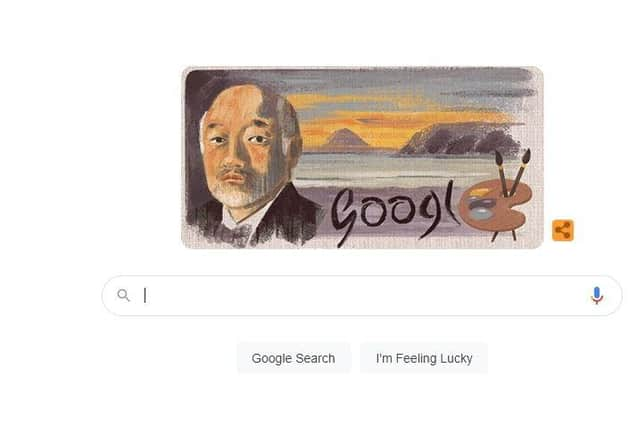Kuroda Seiki: Google Doodle celebrates Japanese painter
Kuroda was an influential artist who’s known as the father of Western-style paintings in Japan – as well as Western art theory in his teachings.
The painter was influential during the 19th and early 20th century – and is widely considered to be on Japan’s greatest artists to this day.
Advertisement
Hide AdAdvertisement
Hide AdHere’s what you need to know and why he features on the Google Doodle today.
Who was Seiki Kuroda?
Kuroda was born on 9 August 1866 in Takamibaba, Satsuma Domain. The son of a samurai of the Shimazu clan, he was adopted as his uncle’s heir at birth and moved to his estate in Tokyo.
After pursing studying in Paris, where he was to study law in 1886 at the age of 18, he met the painters Yamamoto Hosui and Fuji Masazo, as well as art dealer Tadamasa Hayashi, and they convinced him to pursue painting full time.
It was during his time in Paris that he mastered Western styles bringing back to Japan a painting called “Morning Toilette”, which went on to become the first nude painting to be publicly exhibited in Japan.


Sadly it was destroyed in WW2.
In 1886, he founded the Hakuba-kai – also known as the White Horse Society – a group of Japanese practitioners of yoga and painting and was invited to teach the Western Painting Department at the Tokyo School of Fine Arts.
He also served as the President of the Imperial Art Academy and was titled a Viscount in 1917. Then, in 1920, Kuroda was elected to join Japan’s House of Peers, or Kizoku-in, the new aristocratic social class during the Meiji Era.
Seiki Kuroda legacy
Upon his death, Kuroda was given the Order of the Rising Sun by the Japanese government – with his own painting style impacting many artists still to this day.
His work continues to inspire Impressionist and Pleinairist artists.
Two of his works, Maiko (1893) and Lakeside (1897), have also been selected as commemorative postage stamps by the Japanese government.